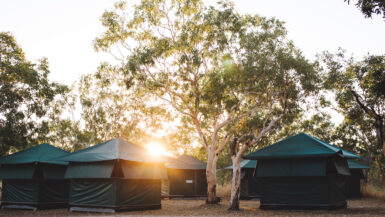Camping is a popular outdoor activity that allows people to connect with nature and escape the hustle and bustle of city life. However, traditional camping practices can have negative impacts on the environment, such as water pollution, deforestation, and waste generation. In recent years, the concept of “green camping” has emerged as a way to enjoy the great outdoors while minimizing one’s ecological footprint. This article will explore the benefits of green camping and provide tips for how to make your next camping trip more sustainable.
Introduction to Green Camping
Camping is a great way to escape the hustle and bustle of city life and connect with nature. However, camping can also have a negative impact on the environment if not done responsibly. That’s where green camping comes in. Green camping, also known as eco-camping, is a type of camping that focuses on minimizing the impact on the environment while still enjoying the great outdoors.
Green camping involves utilizing sustainable practices and eco-friendly products to reduce waste and conserve natural resources. By adopting green camping practices, campers can reduce their carbon footprint, preserve the natural beauty of the outdoors, and promote sustainable tourism.
In this article, we’ll explore the various benefits of green camping, including environmental, health, economic, and social benefits. We’ll also provide tips and best practices for green camping, as well as highlight some of the best green camping gear and equipment. Whether you’re a seasoned camper or a first-timer, this article will help you plan your next eco-friendly camping trip.
Environmental Benefits of Green Camping
Green camping is a sustainable way to enjoy the great outdoors without leaving a negative impact on the environment. Here are some environmental benefits of green camping:
1. Reduced Carbon Footprint
Traditional camping methods can have a significant impact on the environment, from the use of fossil fuels to travel to the disposal of non-biodegradable waste. Green camping, on the other hand, focuses on reducing the carbon footprint by using sustainable transportation methods and minimizing waste production.
2. Preservation of Natural Resources
Green camping practices aim to preserve natural resources such as water and energy. By using eco-friendly products and adopting sustainable practices, campers can minimize their impact on the environment and help protect the natural resources for future generations.
3. Protection of Wildlife
Green camping also involves taking measures to protect wildlife and their habitats. Campers can minimize their impact on wildlife by not disturbing their natural habitats, not leaving food out, and respecting the wildlife’s natural behavior.
4. Improved Air and Water Quality
Green camping practices such as using biodegradable soaps and cleaning products, properly disposing of waste, and avoiding the use of harmful chemicals can help improve air and water quality in the camping area.
By adopting green camping practices, campers can make a positive impact on the environment and help preserve the beauty of the great outdoors for future generations to enjoy.
Health Benefits of Green Camping
Green camping not only benefits the environment but also has several health benefits. Here are some of the health benefits of green camping:
1. Reduced Stress
Camping in a green environment can help reduce stress levels. Spending time in nature has been shown to lower stress hormones, blood pressure, and heart rate, leading to a more relaxed and calm state of mind.
2. Improved Sleep
The natural light and fresh air that come with green camping can help regulate the body’s sleep-wake cycle, leading to better sleep quality. The absence of electronic devices and the peaceful environment can also contribute to a more restful night’s sleep.
3. Increased Physical Activity
Green camping encourages physical activity such as hiking, swimming, and cycling, which can be beneficial for overall health. Physical activity can help improve cardiovascular health, strengthen muscles, and reduce the risk of chronic diseases.
4. Boosted Mental Health
Green camping can also have a positive impact on mental health. Spending time in nature has been linked to reduced symptoms of anxiety and depression, increased self-esteem, and improved cognitive function.
In conclusion, green camping not only benefits the environment but also has several health benefits. By spending time in nature, campers can reduce stress, improve sleep, increase physical activity, and boost mental health.
Economic Benefits of Green Camping
Green camping not only benefits the environment and health but also has several economic benefits. Here are some of the economic benefits of green camping:
1. Lower Cost
Green camping can be a budget-friendly option for travelers. By using sustainable transportation methods such as cycling or walking, campers can save money on transportation costs. Additionally, by minimizing waste production and using eco-friendly products, campers can save money on supplies.
2. Support Local Economy
Green camping promotes sustainable tourism and can support the local economy. By choosing eco-friendly campsites and purchasing local products, campers can contribute to the local economy and help support small businesses.
3. Job Creation
Green camping can also create job opportunities in the tourism industry. As the demand for sustainable tourism grows, more job opportunities may arise in eco-friendly campsites and outdoor recreation.
4. Sustainable Investment
Green camping can also lead to sustainable investment in the tourism industry. By investing in eco-friendly campsites and sustainable tourism practices, the industry can promote long-term economic growth while preserving the natural environment.
In conclusion, green camping not only benefits the environment and health but also has several economic benefits. By choosing eco-friendly practices and supporting sustainable tourism, campers can save money, support the local economy, create job opportunities, and promote sustainable investment in the tourism industry.
Social Benefits of Green Camping
Green camping not only benefits the environment, health, and economy but also has several social benefits. Here are some of the social benefits of green camping:
1. Connection with Nature
Green camping allows campers to connect with nature and appreciate the natural beauty of the outdoors. By spending time in nature, campers can develop a greater appreciation for the environment and a deeper understanding of the importance of conservation.
2. Bonding with Family and Friends
Green camping can also provide opportunities for bonding with family and friends. Camping allows for quality time away from distractions and can foster stronger relationships and memories that last a lifetime.
3. Cultural Exchange
Green camping can also provide opportunities for cultural exchange. By visiting eco-friendly campsites and interacting with locals, campers can learn about different cultures and ways of life.
4. Community Building
Green camping can also promote community building. By participating in eco-friendly practices and supporting sustainable tourism, campers can contribute to a larger community of like-minded individuals who share a passion for the environment.
In conclusion, green camping not only benefits the environment, health, and economy but also has several social benefits. By connecting with nature, bonding with family and friends, experiencing cultural exchange, and promoting community building, campers can enjoy the great outdoors while making meaningful connections with others.
Tips for Green Camping
Green camping involves adopting sustainable practices to minimize the impact on the environment while still enjoying the great outdoors. Here are some tips for green camping:
1. Choose Eco-Friendly Campsites
Choose campsites that have eco-friendly practices such as recycling facilities, composting, and use of renewable energy sources.
2. Reduce Waste Production
Minimize waste production by bringing reusable containers, utensils, and water bottles. Avoid using disposable products such as paper plates and plastic cutlery.
3. Use Sustainable Transportation
Use sustainable transportation methods such as cycling, walking, or public transportation to reduce carbon emissions.
4. Respect Wildlife and Nature
Respect wildlife and nature by not disturbing their natural habitats, not leaving food out, and respecting the wildlife’s natural behavior.
5. Use Eco-Friendly Products
Use eco-friendly products such as biodegradable soaps and cleaning products to minimize the impact on the environment.
6. Conserve Water and Energy
Conserve water and energy by taking shorter showers, turning off lights and electronics when not in use, and using natural light when possible.
7. Leave No Trace
Leave no trace by properly disposing of waste and leaving the campsite as you found it.
By following these tips for green camping, campers can enjoy the great outdoors while minimizing their impact on the environment.
Best Practices for Green Camping
Green camping involves adopting sustainable practices to minimize the impact on the environment while still enjoying the great outdoors. Here are some best practices for green camping:
1. Plan Ahead
Plan ahead and research eco-friendly campsites, sustainable transportation options, and local products to support the local economy.
2. Pack Light
Pack light and bring only essential items to reduce the weight of your camping gear and minimize waste production.
3. Practice Leave No Trace
Practice Leave No Trace principles by properly disposing of waste, leaving the campsite as you found it, and avoiding damaging the natural environment.
4. Use Renewable Energy Sources
Use renewable energy sources such as solar panels or wind turbines to power camping equipment.
5. Minimize Water Usage
Minimize water usage by taking shorter showers, using biodegradable soaps, and avoiding leaving taps running.
6. Use Local Products
Use local products such as food and souvenirs to support the local economy and reduce carbon emissions from transportation.
7. Participate in Sustainable Activities
Participate in sustainable activities such as hiking, cycling, or wildlife watching to reduce carbon emissions from transportation and appreciate the natural environment.
By following these best practices for green camping, campers can enjoy the great outdoors while minimizing their impact on the environment and supporting sustainable tourism.
Green Camping Gear and Equipment
Green camping involves using sustainable products and equipment to minimize waste production and conserve natural resources. Here are some examples of green camping gear and equipment:
1. Solar-Powered Chargers
Solar-powered chargers can be used to charge electronic devices without relying on non-renewable energy sources.
2. Biodegradable Soaps and Cleaning Products
Biodegradable soaps and cleaning products can be used to minimize the impact on the environment and avoid using harmful chemicals.
3. Reusable Containers and Utensils
Reusable containers and utensils can be used to minimize waste production and avoid using disposable products.
4. Eco-Friendly Tents and Sleeping Bags
Eco-friendly tents and sleeping bags made from sustainable materials can be used to minimize the impact on the environment.
5. Portable Water Filters
Portable water filters can be used to filter water from natural sources such as rivers and lakes, reducing the need for single-use plastic water bottles.
6. LED Lanterns
LED lanterns can be used to provide lighting without relying on non-renewable energy sources.
7. Recycled Camping Chairs
Recycled camping chairs made from recycled materials can be used to minimize waste production and support sustainable practices.
By using green camping gear and equipment, campers can minimize their impact on the environment and promote sustainable tourism practices.
Green Camping Destinations
Green camping is a responsible way of enjoying the great outdoors while minimizing the impact on the environment. Fortunately, there are many eco-friendly camping destinations that offer beautiful scenery, clean air, and a wide range of outdoor activities. Here are some of the best green camping destinations:
Yosemite National Park, California
Yosemite National Park is a world-renowned destination for outdoor enthusiasts. The park offers over 750,000 acres of wilderness, including towering granite cliffs, cascading waterfalls, and ancient giant sequoias. Camping is available year-round, and visitors can choose from several campgrounds that offer a range of amenities, from primitive sites to full RV hookups. The park also offers a variety of outdoor activities, such as hiking, rock climbing, fishing, and wildlife watching.
Acadia National Park, Maine
Acadia National Park is located on Mount Desert Island in Maine and is known for its rugged coastline, dense forests, and stunning mountain vistas. The park offers over 120 miles of hiking trails, 45 miles of carriage roads for biking and horseback riding, and numerous lakes and ponds for swimming and fishing. Camping is available in several campgrounds, and visitors can choose from primitive sites to full RV hookups. The park also offers ranger-led programs and educational activities for all ages.
Glacier National Park, Montana
Glacier National Park is a wilderness area located in northern Montana and is known for its pristine lakes, rugged mountains, and abundant wildlife. The park offers over 700 miles of hiking trails, including the famous Highline Trail, which offers stunning views of the park’s glaciers and valleys. Camping is available in several campgrounds, and visitors can choose from primitive sites to full RV hookups. The park also offers a range of outdoor activities, such as fishing, boating, and wildlife watching.
Denali National Park, Alaska
Denali National Park is a vast wilderness area located in central Alaska and is known for its snow-capped mountains, glaciers, and abundant wildlife, including grizzly bears, moose, and caribou. The park offers over 6 million acres of wilderness, including the highest peak in North America, Mount Denali. Camping is available in several campgrounds, and visitors can choose from primitive sites to full RV hookups. The park also offers a range of outdoor activities, such as hiking, mountaineering, and wildlife watching.
These are just a few examples of the many green camping destinations available in the United States. By choosing eco-friendly camping destinations, we can help preserve our natural resources and protect the environment for future generations to enjoy.





Leave a reply